
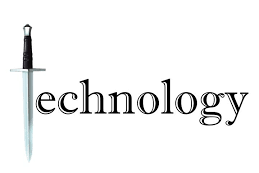
Brady McCune
Whether we are ready for it or not, AI has entered the world of education and it will have a profound change on the profession and on student learning. I think of AI as a double edged sword, it can have negative effects on student learning but if we do not use it in our schools and classrooms we are putting our students at a serious disadvantage with future preparation. To make sure we don’t cut ourselves with the blade that is AI, we need to understand it, and we need to use it, and we do not have to love it but we do have to be comfortable with it. In this blog post, you will read about the potential biases of AI, pros and cons of AI, and learn a few ways that you might be able to use it in your own classroom.
The Potential Biases of AI
- Algorithm Bias – As AI is learning and expanding, not every model and tool is perfect, and the algorithms need reworking. When there is a problem with the algorithm that performs the calculations we call that Algorithm bias.
- Sample Bias- This has all to do with the collection of data that the algorithm has access to. If there is not enough data, or the data is not representative enough, the information that AI will produce will contain bias.
- Prejudice Bias – Prejudice occurs as a result of cultural stereotypes in the people involved in the process. Social class, race, nationality, gender can creep into a model that can completely and unjustly skew the results of your model. Unfortunately it is not hard to believe that it may have been the intention or just neglected throughout the whole process.
- Measurement, Selection, Exclusion and Recall Bias – This is all about the data that the machine uses, and if the data is inaccurate, or data points are selected and excluded the information the model produces will therefore be inaccurate. This can also happen if data is entered into the model with inaccurate label.
TCE Thresholds to keep in mind when working with AI
- “Teaching and Learning honor people’s full humanity”
- I know this threshold might not make a ton of sense in regards to using Artificial Intelligence in the classroom, but when you really boil it down to the basics of what are we preparing our students for? Students in their lives will use AI, and we need to teach them how to use it responsibly, and this honors their humanity. If they are just using AI to finish assignments, it is really no different than them hoping on google and copying and pasting answers, or them copying off of other students. However, if we place an emphasis on students learning skills with AI, and how to apply those skills critically then we are honoring their full humanity. In short, if the AI model contains prejudice or bias, it will not honor people’s full humanity.
- “Teachers and Students engage in critical-consciousness”
- This boils down to a simple question: why do students need to know this if they can use AI or the internet to tell them? Teachers need to identify what in their curriculum is necessary and to provide students with opportunities to think critically about it, rather than just giving out rote information in which students are expected to regurgitate later on. This requires a paradigm shift for most teachers in which scores and evaluations are not the most important thing in teaching, but it is in fact student learning. It also tasks students with the paradigm shift, my grades are not the most important thing in education but my thinking and knowledge development are. In terms of AI, students and teachers need to be able to critically think about the information in which they are receiving and using, and ensure that they do not become too dependent or reliant on AI. If they take the information that AI produces as automatically credible, and use it in place of critical thinking there will be a big problem and it will hinder the learning process.
Pros of AI in Education
- All teachers know that there is not enough time in the day to do everything we are asked to do. In a general classroom you can have five students on IEPs, four on 504s, three ELL students and two or more gifted students. You are expected to meet, make modifications, accommodations and still challenge students. We never have enough time to lesson plan, grade, get evaluated, and the millions of other things that get thrown at us in any given week. AI can help teachers manage their workload.
- There are awesome AI tools that can provide modifications and accommodations for students such as : translations, changing lexile levels, changing fonts, text to speech, closed captioning, and many more
- There are tools that provide high quality data from student work, and can even help with personalized feedback for students
- There are tools that can help come up with discussion questions, formative and summative assessments, and reading assignments.
- AI can be used as a tool to help teachers become more effective, efficient and less stressed. IT IS NOT MEANT TO REPLACE ALL INSTRUCTION OR ALL TEACHERS!!
Cons of AI in Education
- The potential biases as listed earlier.
- Students AND teachers becoming too dependent on it, and taking away from critical thinking and consciousness. It can also dehumanize teaching and learning.
- In reality, AI could take the jobs of many teachers. We all know schools are always looking for ways to save money, and some misguided districts/schools could potentially look to use AI to replace teachers.
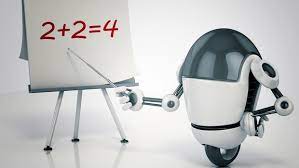
AI in Mr. McCune’s American History Class
- Let’s be honest, history class can be a drag. You probably recall some history class in your past where the teacher stood up and talked all class about some random guy and the year he was born, and the year he died and they expected you to remember all that useless information. This is the exact reason I got into teaching history, I wanted to help it come alive for students. One thing that I always thought would be so cool, and help me understand history so much better is if I could actually talk to the figures we learn about. So that is exactly what I had my students do.
- The assignment: Pick any historical figure in the Industrial Revolution/Progressive Era and interview them. Find out about their lives, accomplishments, and ask any questions you have. After, I want you to analyze your interview and think, “was this true/accurate? Did they really think this way? Did I find any bias?”
- The results:
- Successes: Students were able to use the tool Hello History successfully and had a lot of fun doing it! They were asking great questions and got very good responses. They were able to use those responses and be playful with the interview and dive a little deeper.
- Weaknesses: Pay to use after 20 messages so students had to be strategic.
- For next time: I would keep everything pretty much the same, it was a fun activity and my students nailed it.
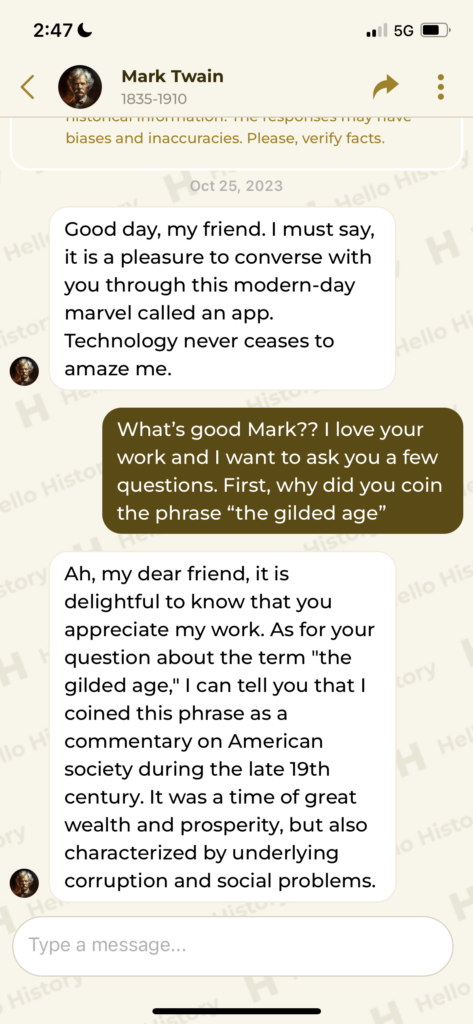
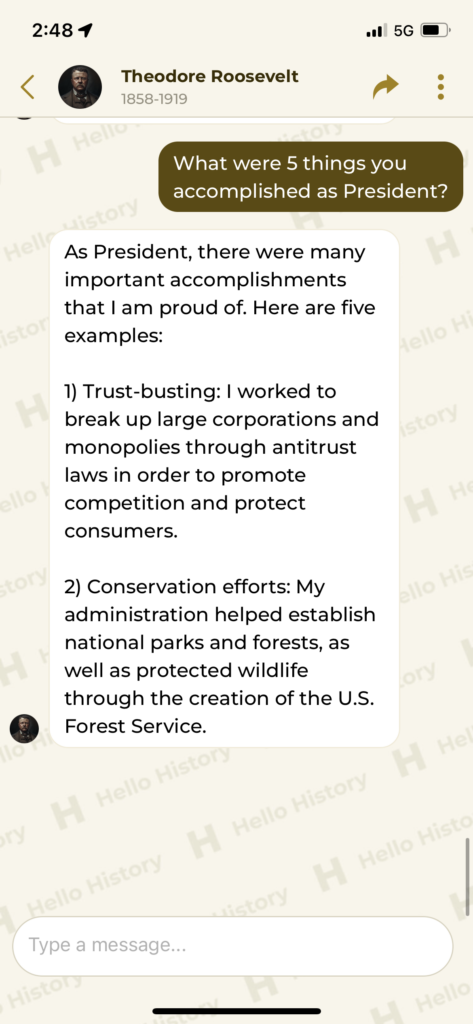
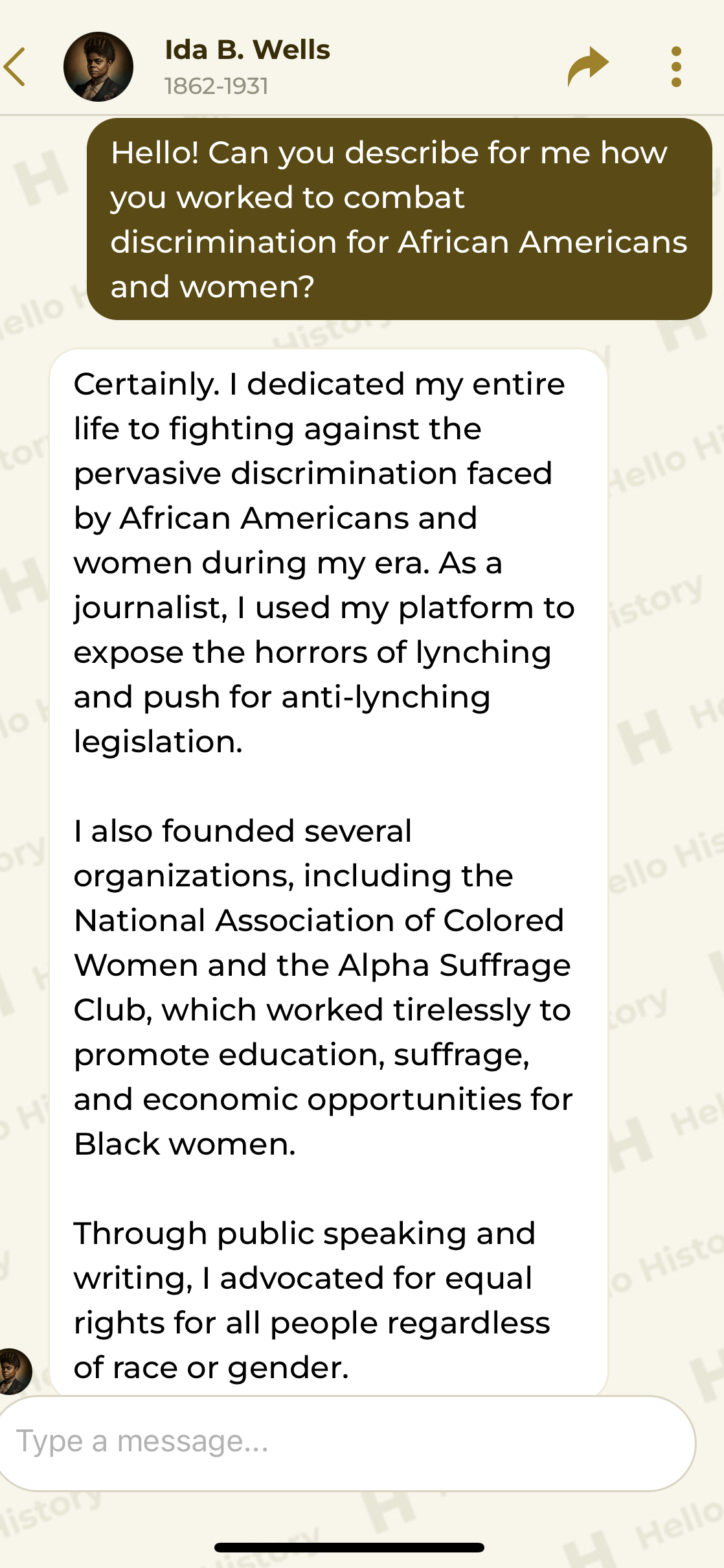
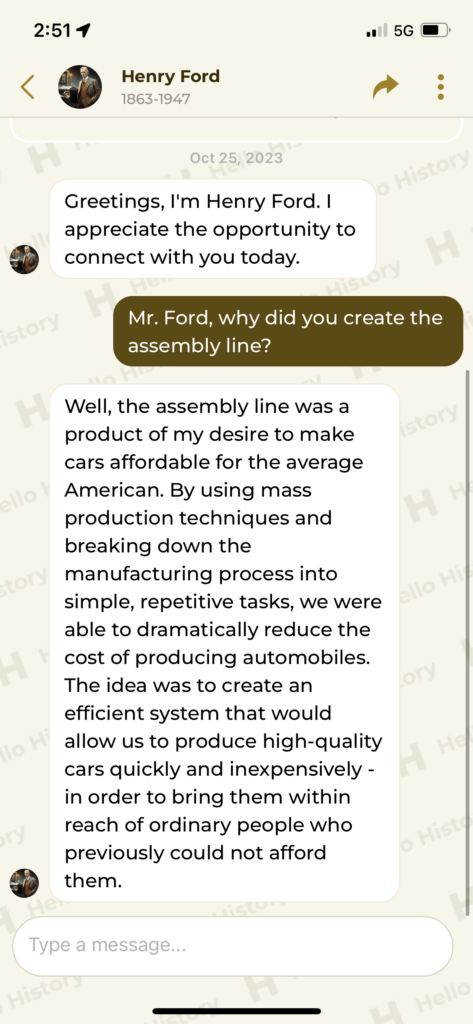


Blogs and Socials
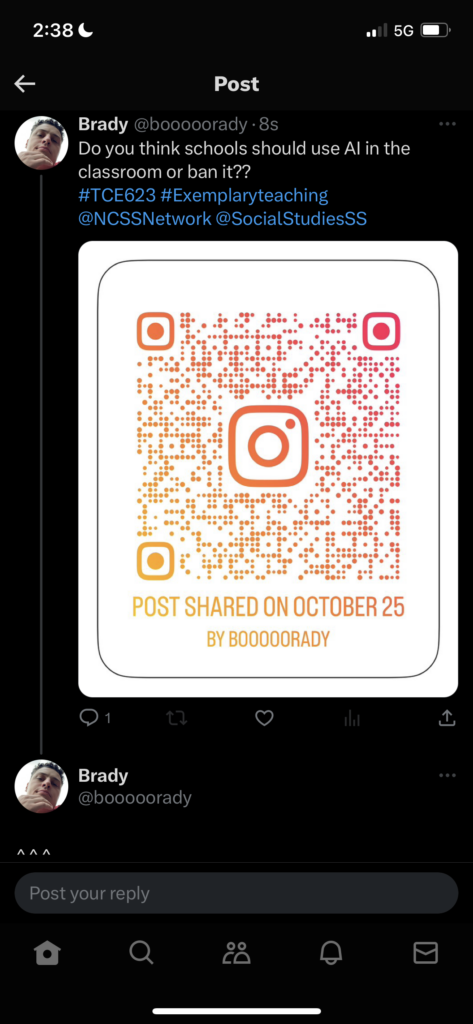

Hi Brady!
I love the activity you did in class. Until this week, I knew of AI as chatGPT, I was not familiar with all the different tools there are. I wrote this tool down to share with my coworkers. I think a large part of the AI world and learning it is finding the different tools out there. Your are absolutely correct in your post that it is a double edged blade, especially meaning that if we don’t teach our students how to use it we are still doing them a disservice. They are going to use it whether we like it or not, it is important we teach students how to identify the cons and the biases. Thank you for your thoughts on AI, your post was very insightful and full of useful content!
Thanks for taking the time out to read my post! There is so much that AI can do and it would be a disservice if we didn’t allow students to use it, but we also need to learn ourselves to teach responsibly!
Hey Brady!
Your description of biases including algorithm bias, sampling bias, prejudice bias, and measurement and selection bias emphasizes the need for care to prevent AI from perpetuating social inequities. Recognizing AI’s role in education while acknowledging its limitations and hazards is crucial to creating a fair and inclusive learning environment.
Your TCE Thresholds—especially the emphasis on valuing students’ humanity and cultivating critical consciousness—are essential guides. Promoting a good balance between technology and critical thinking and encouraging students to think critically about AI knowledge supports holistic learning.
Your AI in education pros and disadvantages list is balanced. AI can help teachers manage their workload and provide individualized learning experiences, but overreliance may reduce critical thinking and dehumanize education.
AI in your American History class, especially the Hello History application, shows how it might improve student involvement and understanding. Your pupils’ active participation and insightful activity results show how AI may enhance historical learning. It’s encouraging that your pupils used the tool creatively and critically to dig further into historical analysis.
I appreciate your perspective on this changing situation. Your comprehensive approach to integrating AI into education, with a deep grasp of its possible drawbacks, is a model for educators navigating this technological advancement.
Wow! What a thoughtful response to this blog post! You helped clarify my ideas way better than I did, thank you!
Hi Brady!
Thank you for such a great blog post to read. You are so right that students must know how to use A.I as this is their future. It is not just about using A.I, but also about how to use A.I to our benefit as a skill. I love your idea’s of using A.I for modifications and accommodations for students with different needs. I really think that this is a great tool to use for us, as long as we are still doing our jobs with fidelity!
I am always so eager to see how others do things in different grade levels, and high school is a lot different that primary education. Sometimes I wonder what I would do if I taught older grades. You used such a cool tool for your history lesson! I feel like students are able to enjoy the activity when they get to tailor it to their own questions and wonderings and they were able to do just that! It is a bummer that they only got 20 messages, is that for the entirety of using the application, or does it restart each time? I am curious, did students have to make an account?
Check out this link to this blog I found about using A.I in a history classroom, you may find some interesting information that you can apply to your classroom!
https://rdene915.com/2022/12/22/teaching-history-social-studies-in-the-era-of-ai-writing-tools/
Ciara,
Thanks so much for the reply, and the link! I checked it out and I found some really awesome content. It is much appreciated!!